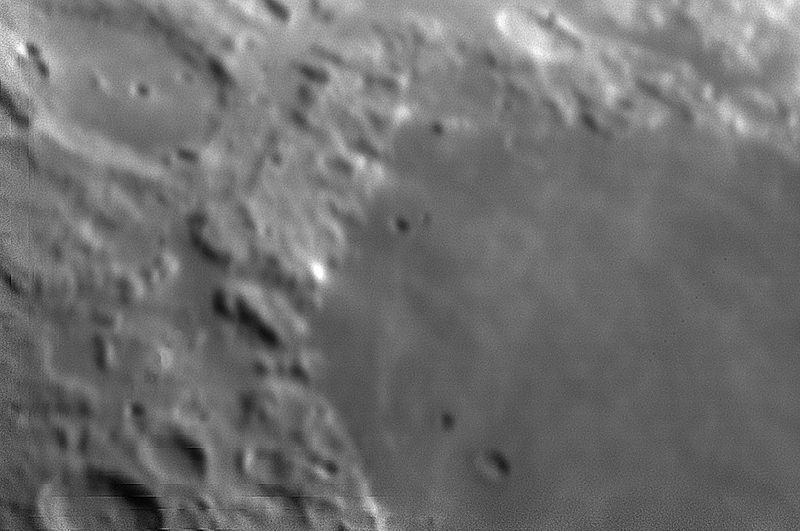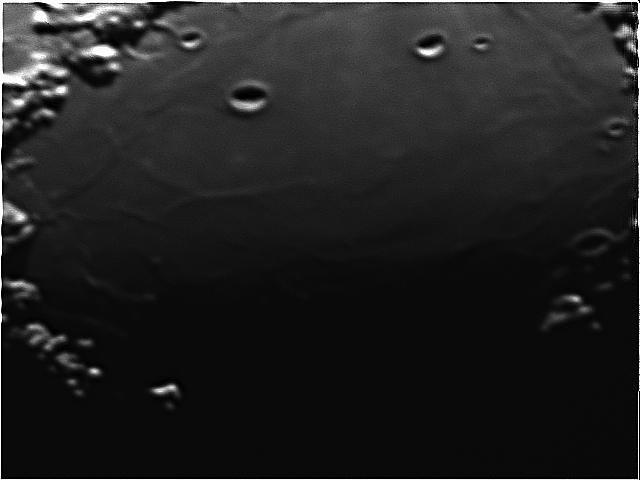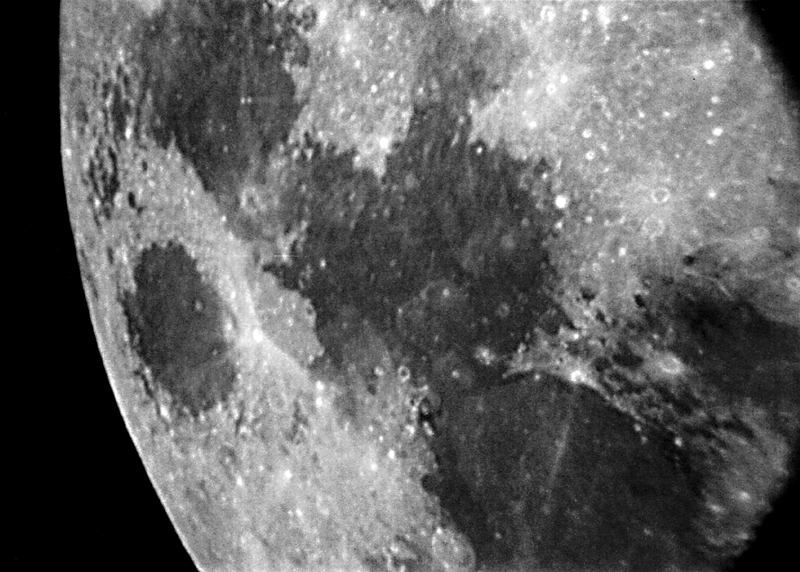
1/125 second exposure, Fuji Super HG II 400 film.
12.5" f/6 newtonian telescope plus 25mm eyepiece.

Mare Crisium is an easily recognisable feature on the moon. It is situated near the eastern limb of the Moon and is the first of the giant, lava-filled impact basins to become visible after new moon. Although almost perfectly circular, it appears elliptical due to forshortening.
Just to the right (west) of Mare Crisium is the bright rayed crater Proculus, while further to the west is Mare Tranquilitatis . To the south (above) is Mare Fecunditatis. Almost in the centre of Mare Fecunditatis, is the pair of bright craters, Messier and Messier A. The bright ray stretching to the west of Messier is commonly nicknamed "the comet".
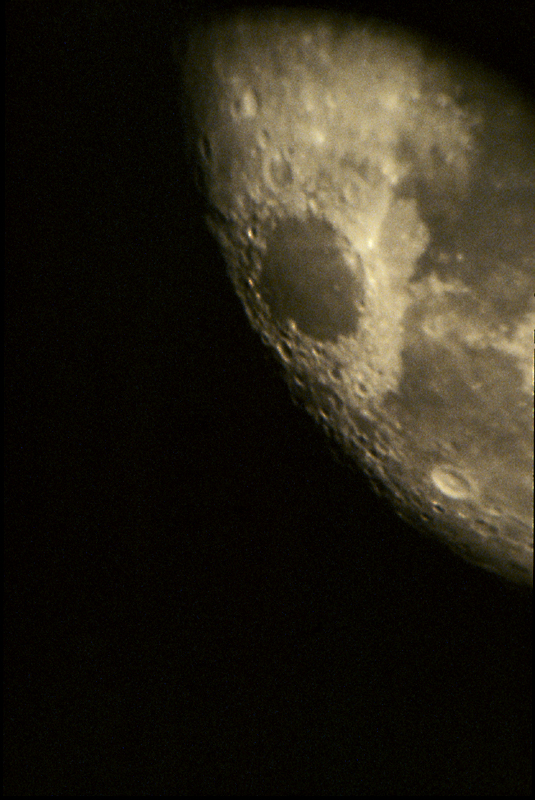
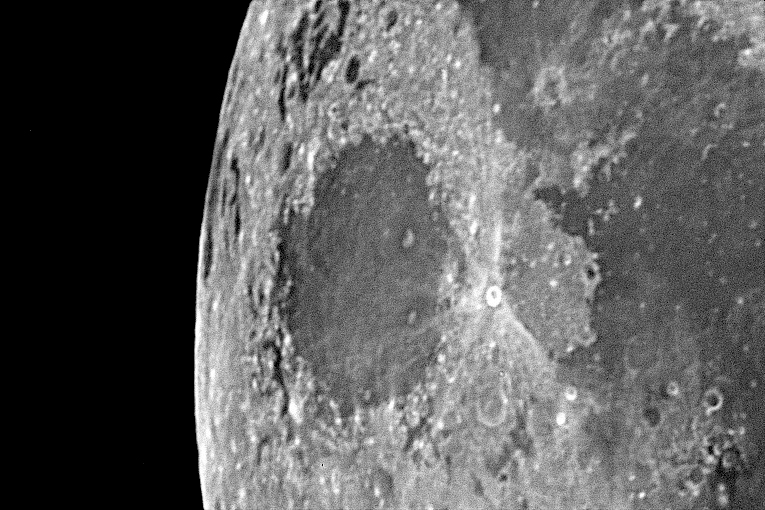
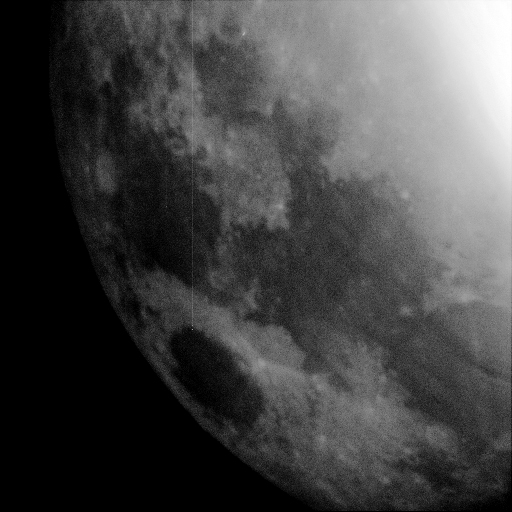
The illumination for this portion of the Moon is coming from earthshine. A small segment of the overexposed sunlit portion of the Moon can be seen to the upper right.
